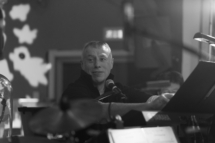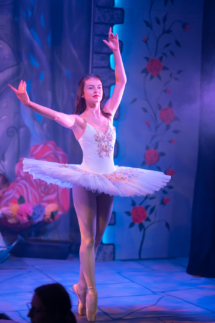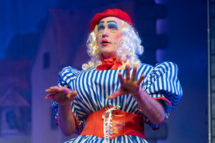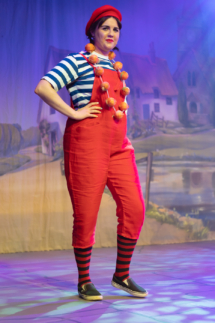A local group asked if I could come back and photograph their latest Panto, ‘Beauty & the Beast’. Armed with my son and our cameras and lenses, we once again braved the stage lights of Theatre Photography 🙂
The Shaldon Theatre Company was performing at the Pavilions Teignmouth in January this year. I had photographed their dress rehearsals before and they were keen to have me back for this panto.
I honestly don’t think people realise how many months of practice go into these shows. Just days before the show (sometimes the day before) they have tech rehearsals and dress rehearsals. I arrived at 6pm for the dress rehearsal. Many had been there since 10am and the rehearsals didn’t finish until 10pm. That’s dedication!
Let’s have a look at some photos and then talk about what it’s like at a dress rehearsal.
A dress rehearsal should be a run-through of the entire performance but short breaks do happen. The most common stops are people or props not in exactly the right spot. Sometimes it is sound issues or lighting not quite in the right spot. At this point, there is nothing game-changing. It’s more about smaller tweaks to the logistics of stage, light, and sound.
People and props in the wrong places have to be corrected. Backdrops can come down as well as move across. You don’t want someone standing under a backdrop as it is coming down.
When they practice in a hall, even if the stage is marked out, it isn’t always accurate because the stage area increases and decreases as the backdrops and props come on the stage. Sometimes just a few centimeters make a massive difference on stage.
While the dress rehearsal is going on the stalls are usually quite empty. Sometimes the families are there for dress rehearsals but it is usually just crew, directors, and other people involved in the show.
Theatre Photography Talk
I love dress rehearsals because I love watching the tweaks and how it all comes together. I also love that I can move freely around the theatre. Theatres with a centre aisle are my favourite because it allows me to be dead centre of the stage and I can move up and down as needed. I usually shoot with Prime lenses so I zoom with my feet. If a Theatre doesn’t have that central aisle I will put a zoom lens on one camera.
As more Theatres move over to LED lighting, the more the theatre photographer has to take care. Banding and flickering are the main issues we face now. The solutions to fix these problems can’t be used. The solutions are usually:
- Use Flash or other external lighting to overpower the problem light(s)
- Use a shutter speed so slow, it stops the issue.
- Use machanical shutter, not electric
In the top two, the solutions are useless. You can’t use your own lighting at the Theatre and the shutter speed would be so slow, everything would be blurry.
Using a mechanical shutter can limit the issues, but it doesn’t always remove the problem entirely. If you look closely at the photos above, the girl inside the table with a spotlight on her, had banding in the photo. It isn’t immediately obvious but it was there for that one light only.
I shoot with a Sony A9 and that is usually excellent at preventing banding. My son was shooting with a Sony A7iii. Both of us were in mechanical shutter so we had exhausted our options to prevent it.
Sometimes there is simply nothing left you can do to stop it.
LED flickering isn’t something I’ve come across at Theatres, but I do see it a lot now in venues for weddings etc. Cheaper, poorer quality lights tend to have the worst problems.
Theatre photography – Cameras and Lenses used
There were two of us photographing the Panto so we were using:
- 2 x Sony A9
- 1 x Sony A7iii
- Sony 85mm F1.4
- Sony 24mm F1.4
- Sony 24-70mm F2.8
- Sony 70-200mm F2.8
If you need some Theatre Photography please check out my website and socials.




















